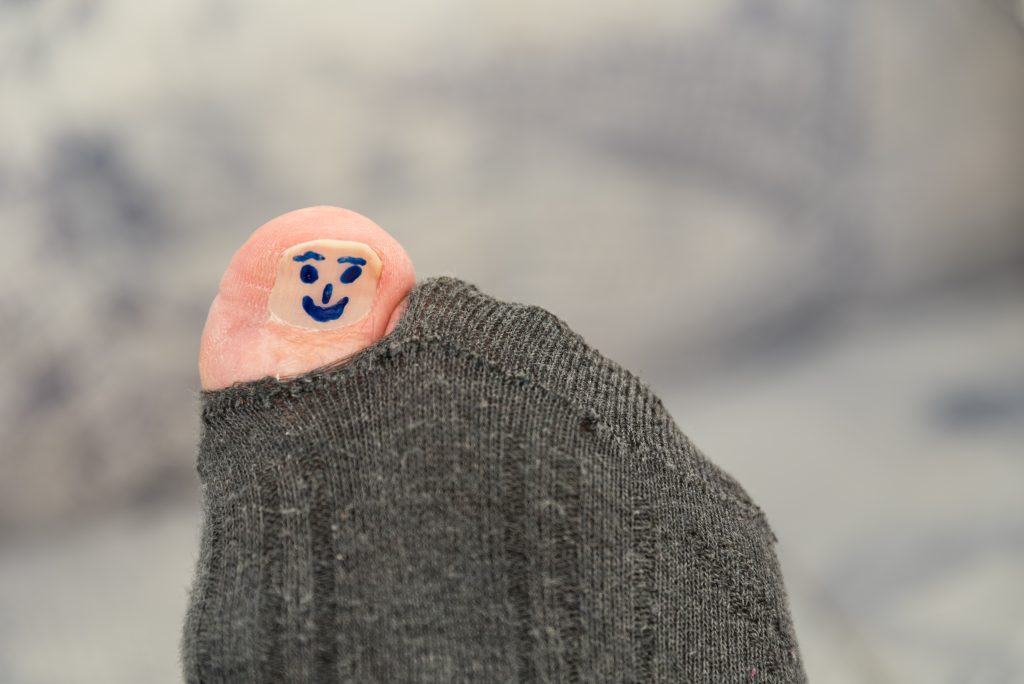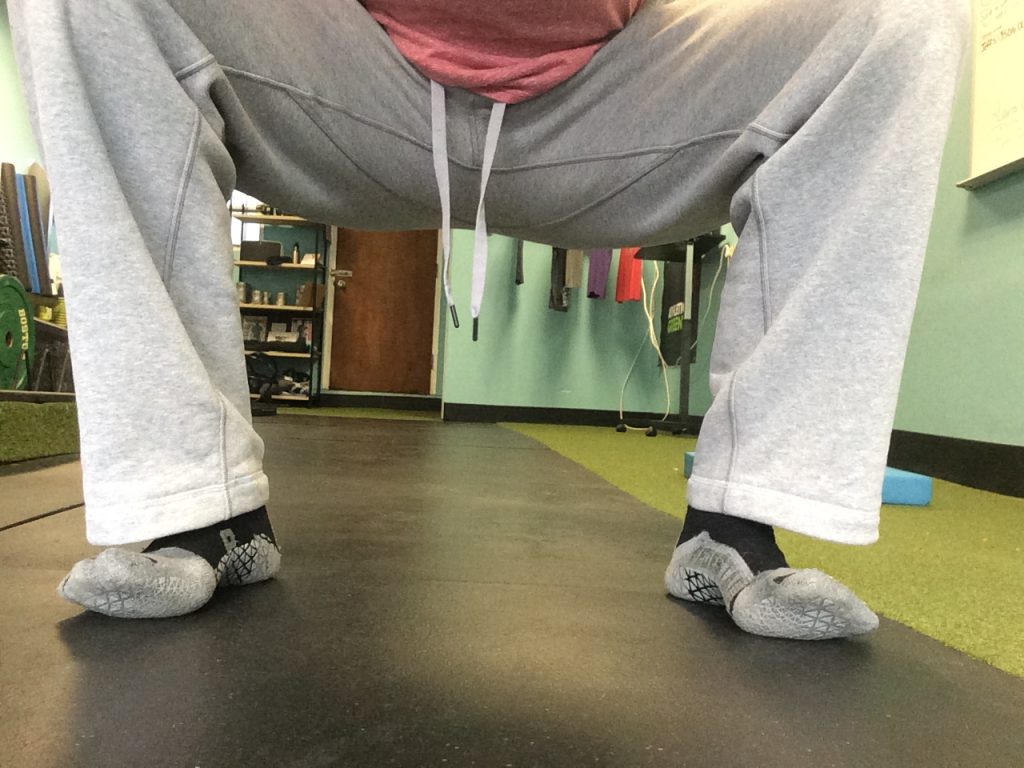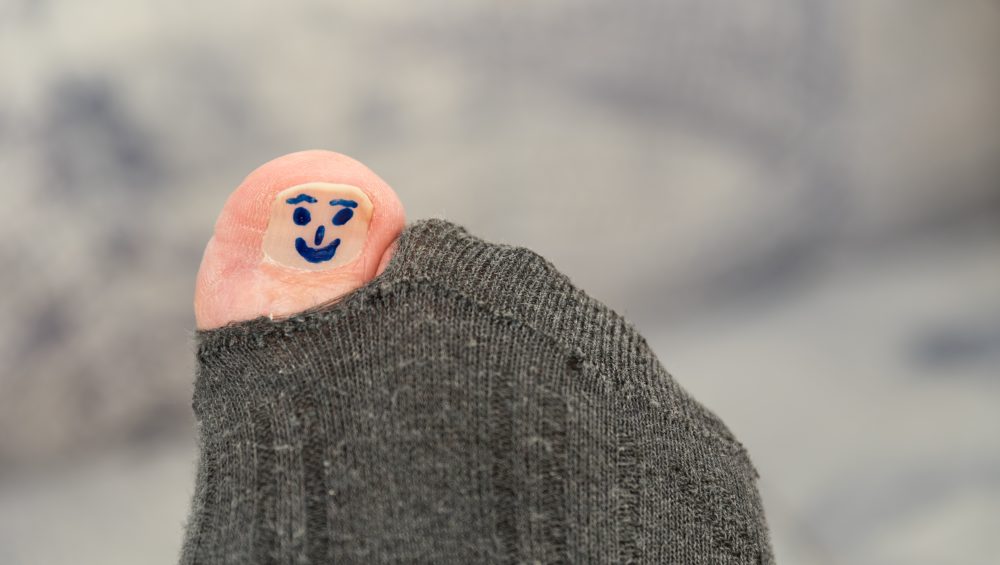Two things with regards to the title of today’s post:
- I’m thinking it could pass for the title of the next big children’s book.1
- Searching stock images for “big toe” pretty much made me want to throw up a little in my mouth. I’d place it somewhere between kipping pull-ups and gonorrhea in terms of stuff I’d rather not see with my eyes ever again.
There’s a lot to consider and that can go awry when discussing the squat. To say there’s a plethora of moving parts – not to mention positional considerations (hand position, stance, bar position, etc) – would be an understatement.
One of the last things you’d probably ever consider when it comes to your squat performance is your big toe. Well, I’m here to tell you that it’s a pretty damn important and something you should consider considering.
Also, this is about as non-pukey of a picture as I could find of a toe.

The Big Toe & the Squat
What inspired this post was an interaction I had with a new client recently. During his initial evaluation I had him show me his squat because he had mentioned the movement has always bothered his lower back.
He’d worked with previous trainers in the past who had attempted to “fix” things, more often than not resulting in him stretching this, smashing that, performing a cornucopia of positional breathing drills while repeating the Elvish alphabet backwards, and otherwise being over corrective exercised to death
The next step was to bring in an exorcist.
I didn’t do any of those things.2
Instead I did something revelatory.
In fact, I’d be surprised if I’m not nominated for a Nobel Prize for how revelatory what I did was.
Are you ready?
Wait for it…
Wait for it…
I watched him squat.
https://www.youtube.com/watch?v=a1Y73sPHKxw
I’m flummoxed as to why this seemingly obvious “intervention” is often overlooked. I think a lot of it has to do with something John Rusin spoke about during his keynote talk at the SWIS 2018 Symposium:
“We’re in an industry that gets too distracted by bright, shiny objects.”
Watching someone squat is boring.
Having someone stand in a zero gravity chamber while a bunch of lasers attempt to release their psoas isn’t.
We’ve become infatuated with gadgets and gizmos so much so that it’s become much harder to galvanize the masses into trusting what it is they do best……
………..COACH.
To that point, I’m old school and I just wanted to watch my man squat.
I had him take off his shoes and pants, and it’s here where I noticed something.
I watched his feet and saw that with every repetition his toes would come up off the ground, like so:

FYI: this is a picture of me doing a reenactment. See you in a few weeks at the Oscars.
Now, for the sake of brevity, it is a conversation to have as to whether or not he was cued into lifting his toes off the ground or not? I’ll nip this in the bud and say for the record that he wasn’t.
He was just never coached on how to squat properly.
As such, it became glaringly clear why his back had always been flipping him the middle finger whenever he attempted to squat (Goblet, front, back, all of them).
When your toes – most often the big toe – comes off the ground you lose your core.
Bullet Points (for those of you too lazy to watch):
- When toes come up, you lose canister position (ribs stacked on pelvis) and thus lose your core and stability.
- When toes comes up, you crank into lower back.
- Think more about foot pressure (pushing into floor and even weight distribution on big toe/metatarsal, small toe, AND heel).
- Cement toes to the floor.
- Take your clients’ shoes off when they squat. It will tell you a lot.
- My biceps looks amazing in salmon colored t-shirts.
But Wait Tony, Some Coaches Cue People to Squat With Big Toe Up on the Way Down, and Then to Push It Into the Ground on the Way Up. Are You Saying They’re Assholes?
No.
Coaches such as Mark Cheng and Cal Dietz – who are both the shit – often advocate the big toe stays up on the way down during a squat (but the ball/metatarsal still stays glued to the floor) and then press the toe down on way up.
I find this to be okay – and far be it from me to say they’re wrong. They’re both developing outstanding athletes and making people better.
I just find that with all the other mental gymnastics that come along with the squat – big air, ribs down, sit down, not back, spread the floor, drive your chest into the bar, hips through, don’t poop your pants – that it gets a little crowded when you add in the “toes up on the descent, toes down on the ascent” cue.
As I note in the video above I like to cue the idea of foot pressure – with three points of contact – and to cement the toes down during the squat.
Moreover, the objective is not to grip or dig into the floor with your toes.
As Lexington, KY based coach, Drew Watts, notes:
“I don’t like “digging” because you don’t want to press the tip of the toe to the ground, more the pad of the toe. Big toe, ball of the foot, 5th metatarsal, heel. Pressing big toe helps the windlass mechanism as well.“
Here’s a nice demonstration of everything in action by Essex, Vermont based strength coach, Jess Voyer (who was kind enough to refer to me as a genius in her IG post. 4,000,000 points to Gryffindor):
https://www.instagram.com/p/Bs-xYyEHdmy/
All of This to Say
Don’t be shy to take people’s shoes off.3
Having a keener eye on what their toes are doing during their squat can give you a lot of information and insight.
Toes down = core on = sexier squat.



